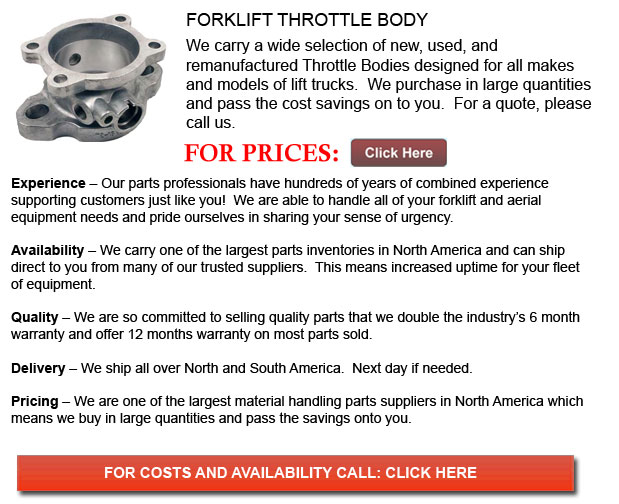
Forklift Throttle Body - Where fuel injected engines are concerned, the throttle body is the part of the air intake system that controls the amount of air which flows into the engine. This mechanism works in response to operator accelerator pedal input in the main. Usually, the throttle body is located between the air filter box and the intake manifold. It is usually connected to or positioned next to the mass airflow sensor. The biggest part inside the throttle body is a butterfly valve called the throttle plate. The throttle plate's main task is to control air flow.
On nearly all vehicles, the accelerator pedal motion is transferred through the throttle cable, hence activating the throttle linkages works to move the throttle plate. In cars with electronic throttle control, likewise referred to as "drive-by-wire" an electric motor controls the throttle linkages. The accelerator pedal is attached to a sensor and not to the throttle body. This sensor sends the pedal position to the ECU or likewise known as Engine Control Unit. The ECU is responsible for determining the throttle opening based on accelerator pedal position together with inputs from other engine sensors. The throttle body consists of a throttle position sensor. The throttle cable connects to the black portion on the left hand side that is curved in design. The copper coil placed next to this is what returns the throttle body to its idle position once the pedal is released.
Throttle plates rotate inside the throttle body each time pressure is placed on the accelerator. The throttle passage is then opened to be able to allow much more air to flow into the intake manifold. Usually, an airflow sensor measures this change and communicates with the ECU. In response, the Engine Control Unit then increases the amount of fluid being sent to the fuel injectors in order to generate the desired air-fuel ratio. Frequently a throttle position sensor or likewise called TPS is attached to the shaft of the throttle plate in order to provide the ECU with information on whether the throttle is in the wide-open throttle or likewise called "WOT" position, the idle position or anywhere in between these two extremes.
In order to control the least amount of air flow while idling, various throttle bodies can include adjustments and valves. Even in units that are not "drive-by-wire" there will normally be a small electric motor driven valve, the Idle Air Control Valve or also called IACV which the ECU uses in order to control the amount of air which could bypass the main throttle opening.
In numerous cars it is normal for them to contain a single throttle body. In order to improve throttle response, more than one can be utilized and attached together by linkages. High performance automobiles like for example the BMW M1, together with high performance motorcycles like for example the Suzuki Hayabusa have a separate throttle body for each cylinder. These models are called ITBs or also known as "individual throttle bodies."
A throttle body is similar to the carburetor in a non-injected engine. Carburetors combine the functionality of the throttle body and the fuel injectors into one. They work by combining the fuel and air together and by controlling the amount of air flow. Vehicles that include throttle body injection, that is referred to as CFI by Ford and TBI by GM, situate the fuel injectors in the throttle body. This enables an older engine the possibility to be transformed from carburetor to fuel injection without considerably altering the engine design.
![]() Click to Download the pdf
Click to Download the pdf
Forklift Parts
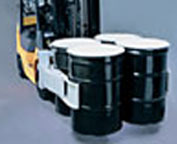
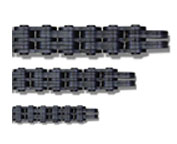
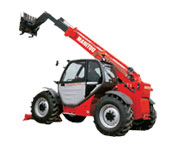
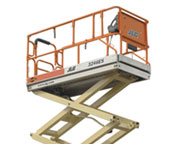
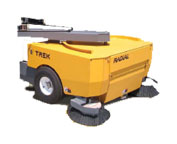
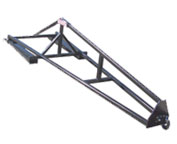
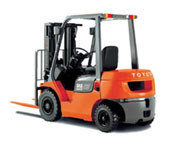
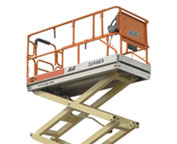
Lift Parts Express
TOLL FREE: 1-888-695-7994
LOCAL: 432-242-4089
3001 C105-241 Loop 250 Frontage Road
Midland, Texas
forkliftpartsmidland.com
Email Us
About Us


